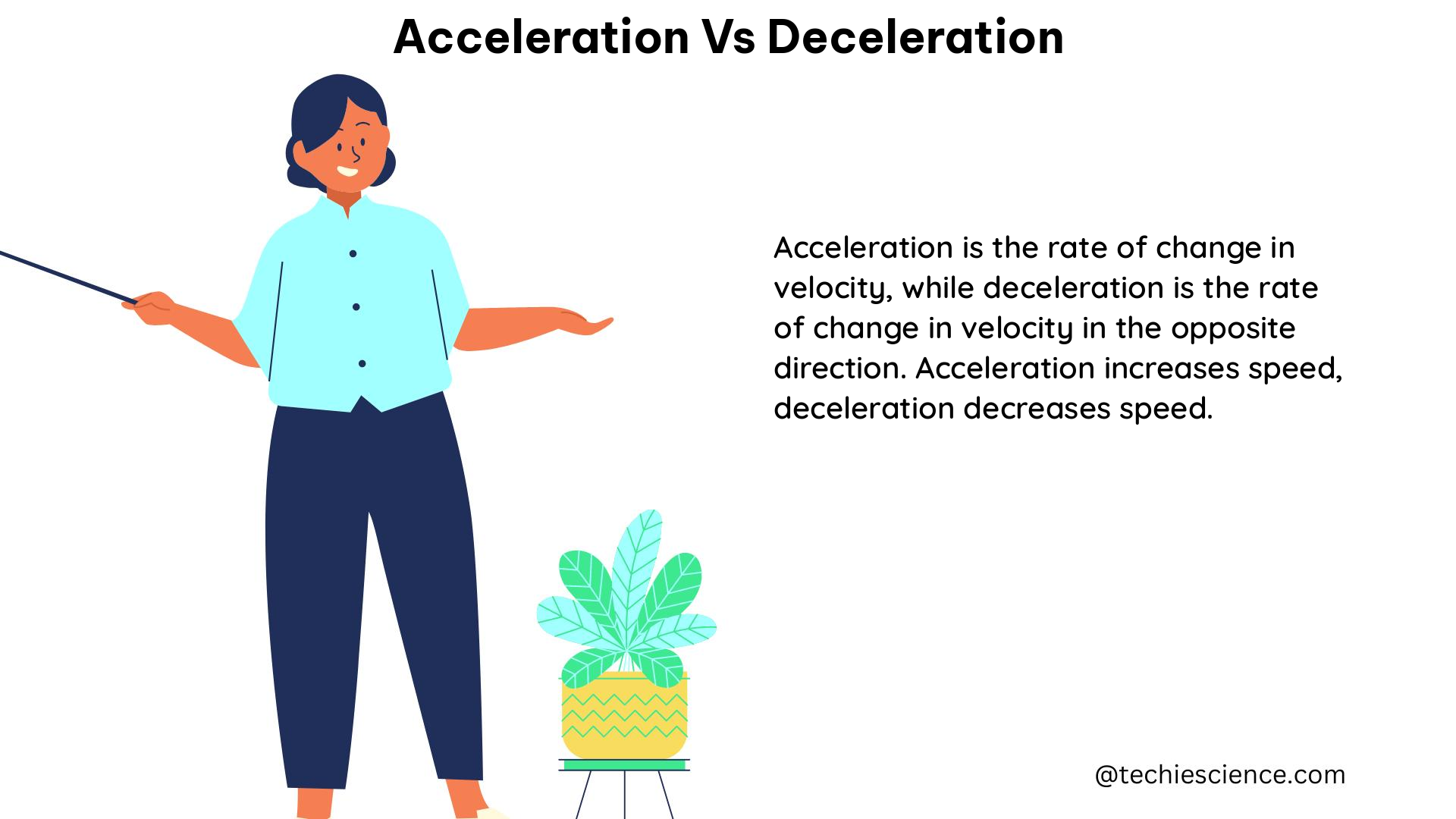Summary
Acceleration and deceleration are fundamental aspects of movement in sports and other physical activities. They can be quantified using various methods, including threshold-based counts, time or distance spent in certain thresholds, or by averaging all absolute acceleration data over a defined time period. The magnitude of acceleration efforts can provide different sources of load experienced by the athlete, with accelerations placing a greater metabolic cost on the body compared to deceleration events, which impose mechanically demanding, eccentric loads.
Understanding Acceleration and Deceleration

Acceleration is the rate of change in velocity over time, measured in units of meters per second squared (m/s²). It represents the change in an object’s speed or direction. Deceleration, on the other hand, is the rate of decrease in velocity over time, also measured in m/s².
The relationship between acceleration and deceleration can be expressed using the following formula:
a = dv/dt
Where:
– a is the acceleration or deceleration (m/s²)
– dv is the change in velocity (m/s)
– dt is the change in time (s)
Positive acceleration indicates an increase in velocity, while negative acceleration (deceleration) indicates a decrease in velocity.
Quantifying Acceleration and Deceleration
There are several methods used to quantify acceleration and deceleration in sports and physical activities:
Threshold-based Counts
This approach involves counting the number of times an athlete’s acceleration or deceleration exceeds a pre-defined threshold, such as 2 m/s² or 3 m/s². The threshold can be adjusted based on the specific sport or activity.
Time or Distance Spent in Thresholds
This method measures the time or distance an athlete spends above or below a certain acceleration or deceleration threshold, providing insights into the duration and frequency of these efforts.
Average Acceleration-Deceleration Metric (Ave Acc/Dec)
This metric is calculated by taking the absolute value of all raw acceleration and deceleration values and then averaging them over a selected time period. This approach has been found to have better reliability and sensitivity across a range of GPS devices compared to threshold-based methods.
Acceleration and Deceleration Density
This metric identifies the number of acceleration and deceleration efforts per unit of time or distance, providing information about the intensity and distribution of these events.
Factors Affecting Acceleration and Deceleration Data
Several factors can influence the reliability and usefulness of acceleration and deceleration data:
Data Processing Techniques
The data processing technique used can significantly impact the results. Differences can occur between and within manufacturers’ proprietary software versions, as well as when comparing manufacturer software-derived data to those obtained using independent raw processing methods.
Sampling Frequency
A 10-Hz sampling frequency is recommended for collecting data on high-intensity accelerations and decelerations using GPS devices, as it has been shown to reliably obtain the occurrence of these efforts, although distance- and time-related variables are less reliable.
Minimal Effort Duration (MED)
The minimal time in which an acceleration or deceleration needs to be maintained above a pre-defined threshold for it to be identified as an effort is a critical data processing feature. This can significantly change the quality, reliability, and usefulness of acceleration and deceleration data.
Practical Applications of Acceleration and Deceleration Data
Acceleration and deceleration data can provide valuable insights for coaches, sports scientists, and athletes in various applications:
Training Load Monitoring
Tracking acceleration and deceleration efforts can help quantify the physical demands placed on athletes during training and competition, enabling more informed decision-making regarding training load management and injury prevention.
Performance Analysis
Analyzing acceleration and deceleration patterns can provide insights into an athlete’s movement efficiency, agility, and ability to change direction, which are crucial in many sports.
Injury Prevention
Understanding the eccentric loads imposed on the body during deceleration events can help identify potential risk factors and inform injury prevention strategies.
Talent Identification
Identifying athletes with superior acceleration and deceleration capabilities can be a valuable tool in the talent identification and development process for various sports.
Conclusion
Acceleration and deceleration are fundamental aspects of movement in sports and physical activities, and their quantification can provide valuable insights for coaches, sports scientists, and athletes. By understanding the various methods of quantifying these metrics, as well as the factors that can influence their reliability and usefulness, practitioners can make more informed decisions and develop more effective training and performance strategies.
References
- High-Intensity Acceleration and Deceleration Demands in Elite Soccer: A Systematic Review and Meta-Analysis. https://www.ncbi.nlm.nih.gov/pmc/articles/PMC6851047/
- The Quantification of Acceleration Events in Elite Team Sport. https://sportsmedicine-open.springeropen.com/articles/10.1186/s40798-021-00332-8
- Practical guidelines for monitoring decelerations: Time to speed up. https://www.sportsmith.co/articles/practical-guidelines-for-monitoring-decelerations-time-to-speed-up/
- Scott, B. R., Lovell, R., & Coutts, A. J. (2016). The accuracy of global positioning system devices for measuring player load in team sports: a systematic review. Journal of Science and Medicine in Sport, 19(9), 707-716.
- Aughey, R. J., & Barrett, S. (2007). The accuracy of GPS for measuring speed and distance in team sports. Journal of Sports Sciences, 25(7), 729-736.
- Coutts, A. J., & Duffield, R. (2010). Monitoring athlete training loads: part 2. Methodological considerations and emerging trends. Sports Medicine, 40(2), 149-163.
I am Shambhu Patil, a physics enthusiast. I have done M.Sc. in Physics. Physics always intrigues me and makes me think about, how this universe works. I have an interest in nuclear physics, quantum mechanics, and thermodynamics. I am very good at problem-solving and explaining complex physical phenomena in simple language. My articles will walk you through each and every concept in detail.